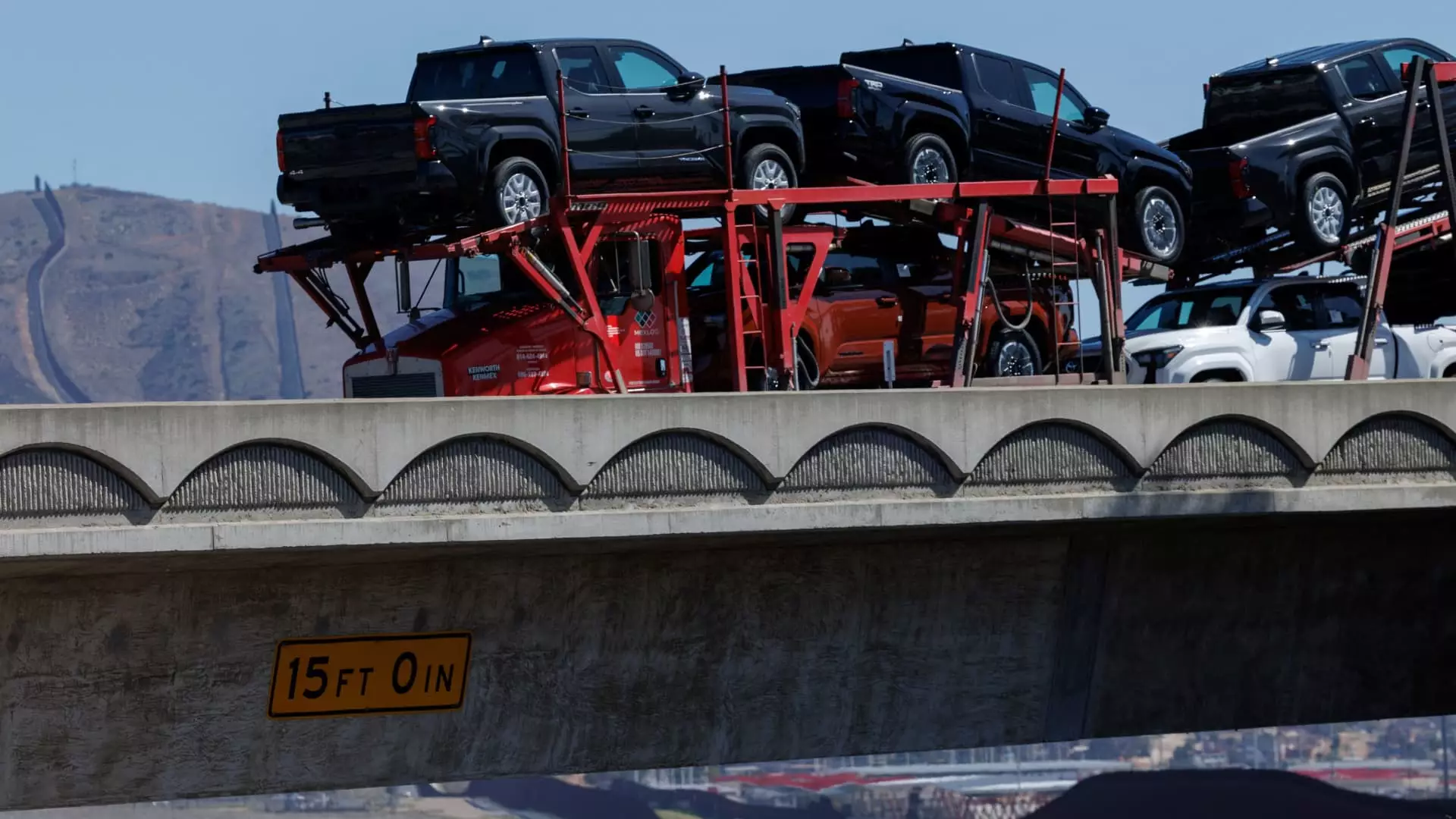President Donald Trump recently made waves with his announcement of a looming 25% tariff on imported vehicles, claiming it would bolster American manufacturing and protect U.S. jobs. On the surface, this move appears to be a well-intentioned effort to safeguard American workers and rejuvenate the auto industry. However, a deeper look reveals a myriad of unsettling implications that strike at the very core of what true economic protectionism should entail.
The tariffs are aimed at cars not produced in the U.S., alongside essential parts, initiating a turbulent storm in the automotive market. Despite the idea that these tariffs will lead to a surge in domestic production and job creation, we must challenge the narrative that protectionist measures will automatically benefit the American worker. The reality often diverges from theory, raising questions about the long-term viability of such aggressive economic policies.
Auto Stocks in Disarray
In the immediate aftermath of Trump’s announcement, the auto stocks experienced a tumultuous decline. General Motors plummeted nearly 8%, Stellantis dropped about 4%, and Ford faced a 2% decrease — a clear indicator that investors are wary of the long-term implications of these tariffs. Conversely, Tesla, a company that has somewhat insulated itself from Trump’s trade wars due to its U.S. manufacturing locations, saw its stock rise by approximately 2%. This snapshot of market response illustrates a complex economy reacting to heavy-handed government interference.
What stands out is the disarray among traditional automakers, who may find it increasingly difficult to navigate this new turbulent landscape. As the car industry has matured into a globalized economy, the components of an automobile come from a patchwork of sources internationally. Given that many vehicles consist of thousands of parts from around the world, the logistics of enforcing such tariffs become nearly insurmountable. Trump’s tariffs, while aimed at protecting jobs, could inadvertently cripple the very companies he purports to help by increasing costs.
The Economic Ripple Effect
Goldman Sachs analysts have indicated that the 25% tariffs could hike the prices of imported vehicles by $5,000 to $15,000. For American-made cars, if up to 50% of the parts are sourced internationally, the potential price increase falls between $3,000 and $8,000. This surge is projected to alienate consumers who may opt for cheaper used cars or altogether different modes of transportation, thus compounding the detrimental effect on the car market.
Moreover, the United Auto Workers union has praised the move, framing it as a victory for blue-collar communities. But this sentiment glosses over the complexity of the auto supply chain and the economic ramifications that could unfold. If automakers are compelled to increase prices due to the tariffs, consumers may be pushed to the sidelines, leading to diminished sales and employment layoffs — the very antithesis of what is intended.
The Fine Print of Global Trade
It is critical to dissect how these tariffs intersect with existing trade agreements. Parts that comply with the United States-Mexico-Canada Agreement’s rules of origin will remain exempt from tariffs until further assessments take place. This nuanced approach raises questions about the consistency and clarity of trade policy under the current administration. Companies are left to navigate a confusing labyrinth of compliance rules as they adapt to the evolving landscape of tariffs.
The reality is that vehicles evolve through a global network where parts traverse various borders before a final product materializes. The intricacies involved in automotive production mean that imposing tariffs can complicate supply chains rather than consolidate them into a more American-centered approach. If enforced without thoughtful consideration, these initiatives could lead to a spiral of escalating trade tensions and retaliatory measures from international partners.
Examining Long-Term Viability
The long-term implications of these tariffs raise critical questions about economic foresight. Will the U.S. auto industry truly benefit from these protective measures, or are we ushering in an era of isolationism that could stifle innovation and competitiveness? The fundamental truth remains: protectionism is a double-edged sword that can easily backfire, burdening both industry and consumers alike, leading to adverse effects that this administration has not fully accounted for. As we advance in this politically-charged environment, the need for balanced, informed decision-making becomes more essential than ever.

